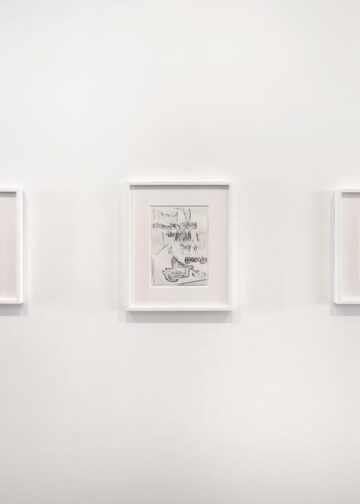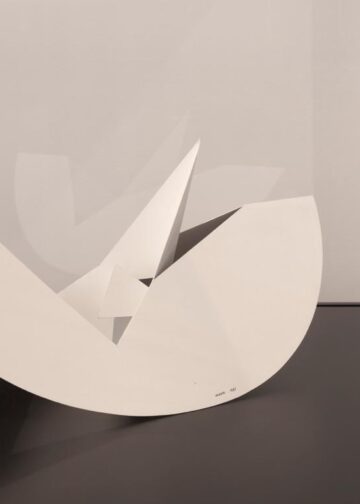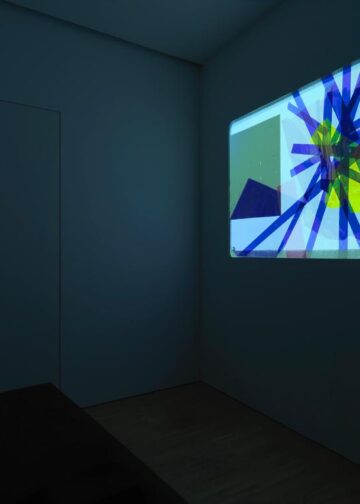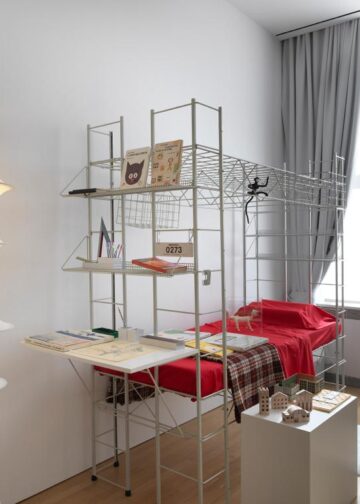“Americans are pragmatic, they box everything in, but I think there is room to get out of these boxes, to break them, sowing doubt.” Laura Mattioli is full of doubts, and of certainties. The first and foremost of these are that modern Italian art is misunderstood in America; that there is a need to work on awareness to restore it to its proper place in the international art scene; and that young scholars need cultural exchange. This is what prompted her to create CIMA, the Center for Italian Modern Art in 2013, at 421 Broome Street, and to support and guide it even during the difficult years of the pandemic, to make it a cornerstone of the New York art world.
“I often came to the United States and realized that Italian art was not being shown, nor known as it should be. I therefore felt a desire to have it recognized as an autonomous reality in relation to the French art, from which it is often derived in America.” What happened, she explains, is that the French artists who fled Hitler brought their art to the new continent, obscuring the rest. “Hitler’s gift to America” the Americans called it, and they welcomed the fleeing artists with open arms, from Chagall to Marcel Duchamp to Fernand Léger, and set about to learn from them.
Pierre Matisse, meanwhile, Henri Matisse’s son, had set up a gallery in the Flatiron Building to exhibit the French avant-garde: Braque, Derain, Dufy, Picasso, of course Henri Matisse, and Joan Miró and Marc Chagall. The entire French art world had a visibility that overshadowed the rest. “The lack of knowledge about our art is such that even today the New York Times writes that Lucio Fontana is Italo-Argentine (Lucio Fontana, a Sculptor but So Perverse – In terra cotta, clay, metal and concrete, the Argentine Italian artist overhauled the history of European sculpture. Dec. 22, 2022). Pellizza da Volpedo’s Fourth Estate was practically unknown, and for that matter, they know little about Italian art between 1880 and World War I, to which we have dedicated the exhibition Staging Injustice.”

Laura Mattioli is the daughter of a collector, she tells us: Gianni Mattioli (1903-1977) was one of the greatest collectors of the 20th century, of Futurist art in particular, which he began acquiring in 1949. His collection, which became an indivisible estate in 1973, was exhibited from 1997 to 2015 at the Guggenheim in Venice, then in Madrid, New York, St. Petersburg, and Moscow, and is now at the Novecento in Milan. Laura Mattioli’s has thus been a life in art, as she grew up in the shadow of her father’s passion, then married a restorer, Giovanni Rossi, and became in turn an art historian and lecturer.
She curated the Boccioni exhibition at the Guggenheim in 2004, and much more. But she downplays all this, with a slight smile, when asked if she is happy to have been destined by birth for a life in art, and replies, “I’ve had a difficult life-without going into details-but basically everyone has a difficult life.”
Laura Mattioli, however, has taken her life into her own hands and led it with courageous, generous, idealistic choices. The New York Times compared her to Peggy Guggenheim because, like the American patron, she is a munificent sponsor of art and supporter of young people (She’s the Peggy Guggenheim of SoHo – Steward of a collection of 20th century art, Laura Mattioli made a future for the Futurists at the Center for Italian Modern Art in Manhattan By Joseph Giovannini April 20, 2022).
“We give scholarships to young Italian scholars, American scholars, it doesn’t matter the nationality as long as they are qualified, to come and study 6 months here, to follow the exhibition and delve into its themes and content. There are people who go out of their way to feed the Senegalese — to say, I feed these young people in the sense that I help them spread their wings, so they don’t end up as waiters because they can’t find the appropriate career outlets. I don’t know how to do anything else; I do this.
I realized that the study methodologies, Italian and American, are the opposite, and I set out to give these students a chance to be confronted with a different methodology. We have many scholars, for example, who come from the Scuola Normale in Pisa, who are very well prepared, but very theoretical, philological, they lack broader references. Here, on the contrary, students have broad overviews in mind on which, however, they perhaps get the chronological placements wrong and lose sight of the art object. Our 5 scholars a year do the guided tours and confront the works daily, and after 6 months their perception of the objects is different and deep.”

The CIMA was born as a special museum, where exhibitions are not the result of studies, as is usually the case, but the origin, she explains. “We are part of ARIAH, the association of institutes that do research on art history, the Metropolitan as well as the Getty, and so on, are members; we publish an online magazine, Italian Modern Art, that was requested by the Library of Congress, and our scientific committee is made up of half Italians and half Americans. At first, we used to do one exhibition a year, but now Italian museums only lend the works for six months, so we do two.”

The exhibition on Bruno Munari (1907-1998) The Child Within, that will close in mid-January was a great success. “We centered it on his children’s books because education is very important, especially now, and because we wanted something seemingly light for such a complex social and political moment.” Curated by Steven Guarnaccia, a professor at Parsons School of Design, it brings together about 130 books, objects and works from archives, museums and private collections.
The exhibition begins in the kitchen, “because this is a home” — Laura Mattioli explains –“we want people not to feel that they are in a museum, all homes have a kitchen, and our visitors start their tour with a coffee.” Here we find Munari’s photos, in the hallway, the Russian books commissioned by Lenin for the new world he intended to build, books whose graphics influenced Munari early in his work in Milan in 1927. Opposite is a series of xeroxes created in ’68, when the artist was invited to the Biennale. His moving copies have a futurist effect, and express the belief that everyone can make them and be an artist in their own way — a democratic idea of art.

In the great hall we find the children’s books to which Munari devoted himself after the war. They are experiments in communication through forms, colors and materials, presences and absences, holes, transparencies. Munari creates the Illegible books decipherable only by the intuitive intelligence of children, the dictionary of gestures, it illustrates Gianni Rodari’s fairy tales.
On display are paper sculptures influenced by Japanese origami, the Useless Machines, forms suspended in space thanks to invisible wires, created in the 1930s during the same period of time that Calder made his famous mobiles, a colorful plastic Wheel Fountain from 1958.

In another room are his Direct Projections that he created starting from the 1950s, projected on the wall with different materials and techniques on slides inserted into slide frames. And then the 1965 Tetracone, where four cones in green and red, located inside a cube, can be turned around creating different color compositions.
Finally, the reconstruction of Abitacolo, a modular children’s bedroom that Munari designed in 1971 to create a space that each child could compose for himself. Next is the Falkland 165 Floor lamp from 1964, produced by Artemide made from a woman’s stocking. And a Fossil from 2000, unhinged metal pieces put there imagining that in the distant

future our great-grandchildren will find some electronic component underground and wonder: What is it?
Bruno Munari: The Child Within was mounted in collaboration with Corraini Edizioni, the support of the Embassy of Italy in Washington and the Italian Cultural Institute of New York, and thanks to Sonus Faber.












